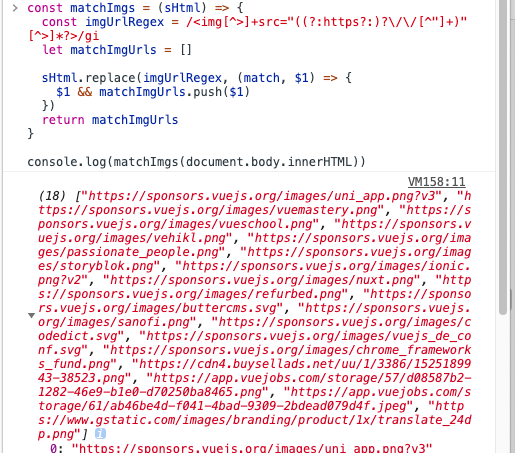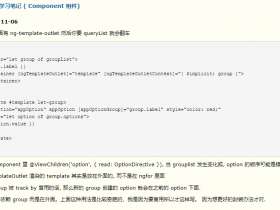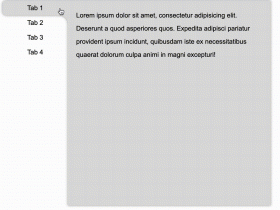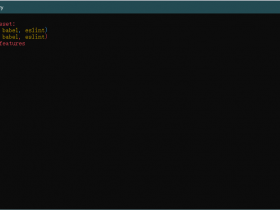- A+
所属分类:Web前端
千分位格式化
在项目中经常碰到关于货币金额的页面显示,为了让金额的显示更为人性化与规范化,需要加入货币格式化策略。也就是所谓的数字千分位格式化。
例如 123456789 => 123,456,789 、 123456789.123 => 123,456,789.123
const formatMoney = (money) => { return money.replace(new RegExp(`(?!^)(?=(\d{3})+${money.includes('.') ? '\.' : '$'})`, 'g'), ',') } formatMoney('123456789') // '123,456,789' formatMoney('123456789.123') // '123,456,789.123' formatMoney('123') // '123'
解析链接参数
当获取URL中的参数时候
// url <https://qianlongo.github.io/vue-demos/dist/index.html?name=fatfish&age=100#/home> const name = getQueryByName('name') // fatfish const age = getQueryByName('age') // 100
const getQueryByName = (name) => { const queryNameRegex = new RegExp(`[?&]${name}=([^&]*)(&|$)`) const queryNameMatch = window.location.search.match(queryNameRegex) // Generally, it will be decoded by decodeURIComponent return queryNameMatch ? decodeURIComponent(queryNameMatch[1]) : '' } const name = getQueryByName('name') const age = getQueryByName('age') console.log(name, age) // fatfish, 100
通过正则,简单就能实现 getQueryByName 函数:
驼峰字符串
const camelCase = (string) => { const camelCaseRegex = /[-_s]+(.)?/g return string.replace(camelCaseRegex, (match, char) => { return char ? char.toUpperCase() : '' }) } console.log(camelCase('foo Bar')) // fooBar console.log(camelCase('foo-bar--')) // fooBar console.log(camelCase('foo_bar__')) // fooBar
小写转大写
const capitalize = (string) => { const capitalizeRegex = /(?:^|s+)w/g return string.toLowerCase().replace(capitalizeRegex, (match) => match.toUpperCase()) } console.log(capitalize('hello world')) // Hello World console.log(capitalize('hello WORLD')) // Hello World
实现 trim()
trim() 方法用于删除字符串的头尾空白符,用正则可以模拟实现 trim: const trim1 = (str) => { return str.replace(/^s*|s*$/g, '') // 或者 str.replace(/^s*(.*?)s*$/g, '$1') } const string = ' hello medium ' const noSpaceString = 'hello medium' const trimString = trim1(string) console.log(string) console.log(trimString, trimString === noSpaceString) // hello medium true
HTML 转义
防止 XSS 攻击的方法之一是进行 HTML 转义,符号对应的转义字符:
const escape = (string) => { const escapeMaps = { '&': 'amp', '<': 'lt', '>': 'gt', '"': 'quot', "'": '#39' } // The effect here is the same as that of /[&<> "']/g const escapeRegexp = new RegExp(`[${Object.keys(escapeMaps).join('')}]`, 'g') return string.replace(escapeRegexp, (match) => `&${escapeMaps[match]};`) } console.log(escape(` <div> <p>hello world</p> </div> `))
校验 24 小时制
处理时间,经常要用到正则,比如常见的:校验时间格式是否是合法的 24 小时制:
const check24TimeRegexp = /^(?:(?:0?|1)d|2[0-3]):(?:0?|[1-5])d$/ console.log(check24TimeRegexp.test('01:14')) // true console.log(check24TimeRegexp.test('23:59')) // true console.log(check24TimeRegexp.test('23:60')) // false console.log(check24TimeRegexp.test('1:14')) // true console.log(check24TimeRegexp.test('1:1')) // true
校验日期格式
常见的日期格式有:yyyy-mm-dd, yyyy.mm.dd, yyyy/mm/dd 这 3 种,如果有符号乱用的情况,比如2021.08/22,这样就不是合法的日期格式,我们可以通过正则来校验判断:
const checkDateRegexp = /^d{4}([-./])(?:0[1-9]|1[0-2])1(?:0[1-9]|[12]d|3[01])$/ console.log(checkDateRegexp.test('2021-08-22')) // true console.log(checkDateRegexp.test('2021/08/22')) // true console.log(checkDateRegexp.test('2021.08.22')) // true console.log(checkDateRegexp.test('2021.08/22')) // false console.log(checkDateRegexp.test('2021/08-22')) // false
匹配颜色值
在字符串内匹配出 16 进制的颜色值:
const matchColorRegex = /#(?:[da-fA-F]{6}|[da-fA-F]{3})/g const colorString = '#12f3a1 #ffBabd #FFF #123 #586' console.log(colorString.match(matchColorRegex)) // [ '#12f3a1', '#ffBabd', '#FFF', '#123', '#586' ]
判断 HTTPS/HTTP
这个需求也是很常见的,判断请求协议是否是 HTTPS/HTTP
const checkProtocol = /^https?:/ console.log(checkProtocol.test('https://medium.com/')) // true console.log(checkProtocol.test('http://medium.com/')) // true console.log(checkProtocol.test('//medium.com/')) // false
校验版本号
版本号必须采用 x.y.z 格式,其中 XYZ 至少为一位,我们可以用正则来校验:
const versionRegexp = /^(?:d+.){2}d+$/ console.log(versionRegexp.test('1.1.1')) console.log(versionRegexp.test('1.000.1')) console.log(versionRegexp.test('1.000.1.1'))
获取网页 img 地址
这个需求可能爬虫用的比较多,用正则获取当前网页所有图片的地址。在控制台打印试试,太好用了~~
const matchImgs = (sHtml) => { const imgUrlRegex = /<img[^>]+src="((?:https?:)?//[^"]+)"[^>]*?>/gi let matchImgUrls = [] sHtml.replace(imgUrlRegex, (match, $1) => { $1 && matchImgUrls.push($1) }) return matchImgUrls } console.log(matchImgs(document.body.innerHTML))
格式化电话号码
这个需求也是常见的一匹,用就完事了:
let mobile = '18379836654' let mobileReg = /(?=(d{4})+$)/g console.log(mobile.replace(mobileReg, '-')) // 183-7983-6654





